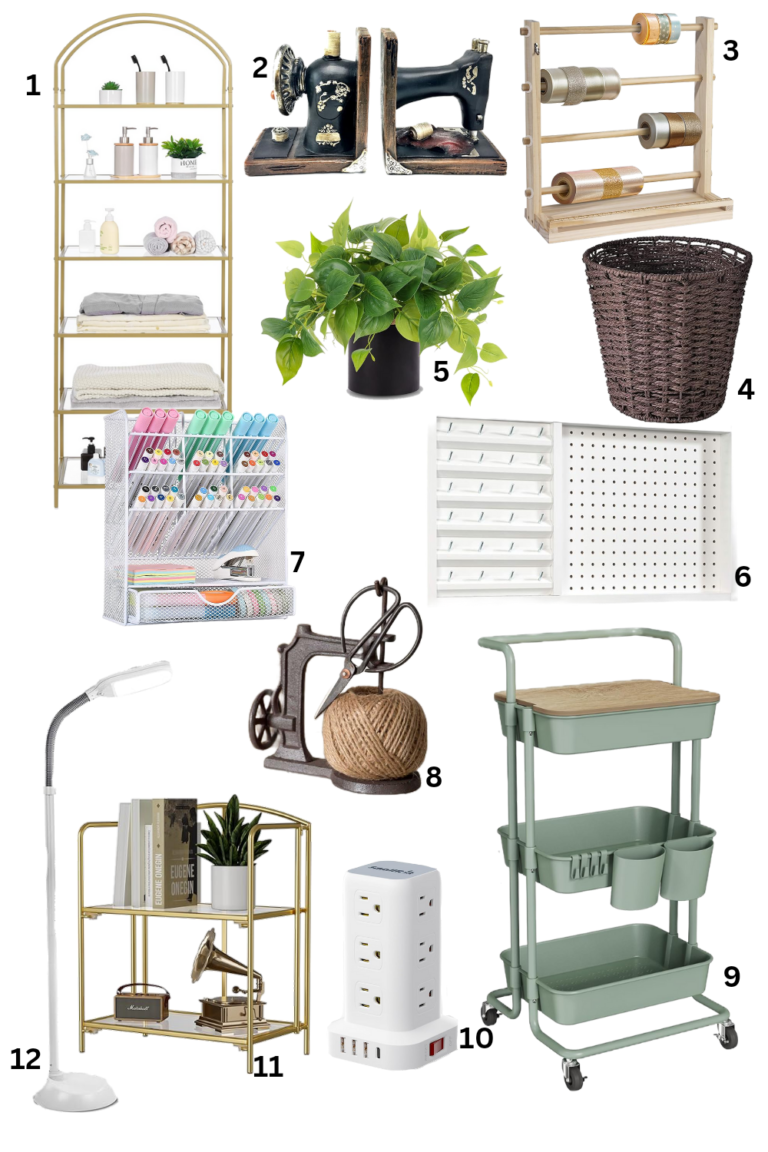Beginner’s Hand Embroidery Supply List
This blog post is about Beginner’s Hand Embroidery Supply List. Are you eager to dive into the world of hand embroidery but unsure where to start? Look no further! This comprehensive beginner’s hand embroidery supply list will walk you through all the essential supplies you need as a beginner. From embroidery hoops to fabric scissors, we’ve got you covered. Let’s get started on your creative journey!

Beginner’s Hand Embroidery Supply List
For simple embroidery tutorials, check out the links below
5 Easy Embroidery Flowers |For Beginners Hand Embroidery
Free Printable Beginner Embroidery Pattern
1. Embroidery Hoops
Embroidery hoops are a must-have for keeping your fabric taut and ensuring even stitches. For beginners, a 6-inch hoop is ideal. Both wooden and plastic hoops work well, so choose the one that feels most comfortable in your hands.
2. Embroidery Needles
Embroidery needles, also known as crewel needles, are designed with a larger eye to accommodate embroidery floss. Start with a variety pack of sizes 5-10 to find the perfect fit for your projects.
3. Embroidery Floss
Embroidery floss is a versatile thread made from six strands of cotton. It comes in a vast array of colors, allowing you to create vibrant designs. Popular brands like DMC and Anchor offer high-quality, colorfast options.
4. Fabric
Choosing the right fabric is crucial for your embroidery projects. Cotton and linen are excellent choices for beginners due to their tight weave and smooth texture. Muslin and evenweave fabrics are also great for practice.
5. Fabric Scissors
A good pair of fabric scissors is essential for cutting your fabric and threads. Ensure you use scissors specifically designed for fabric to achieve clean and precise cuts.
6. Embroidery Patterns
As a beginner, having a few embroidery patterns to follow can be very helpful. You can find free patterns online or purchase pattern books. Look for simple designs to practice basic stitches. Find free patterns HERE
7. Water-Soluble Marking Pen
A water-soluble marking pen is useful for transferring patterns onto your fabric. The ink disappears with water, so you won’t have any unwanted marks on your finished piece.
8. Needle Threader
Threading a needle can be tricky, especially with embroidery floss. A needle threader is a handy tool that makes threading your needle quick and easy.
9. Embroidery Floss Organizer
Keeping your embroidery floss organized is essential to avoid tangles and knots. An embroidery floss organizer or bobbins can help you keep your threads neat and accessible.
10. Thimble
A thimble protects your fingers from needle pricks, especially during long stitching sessions. Choose a thimble that fits comfortably on your finger.
11. Embroidery Stitch Guide
A stitch guide is a valuable resource for learning different embroidery stitches. You can find stitch guides online, in books, or as printable charts. Start with basic stitches like the backstitch, satin stitch, and French knot. Here is a tutorial for a few basic stitches HERE
12. Iron and Ironing Board
Ironing your fabric before and after stitching ensures a smooth surface and helps set your stitches. A small, portable iron and ironing board are perfect for embroidery projects.
13. Pincushion
A pincushion is a convenient way to keep your needles and pins within reach while you work. Choose a pincushion that’s easy to use and keeps your needles secure.
14. Embroidery Frame
An embroidery frame or stand can hold your hoop while you work, freeing up both hands for stitching. This is especially useful for larger projects or more complex designs.
15. Storage Container
A storage container with compartments is ideal for keeping all your embroidery supplies organized. Look for a container that’s portable and has enough space for your threads, needles, scissors, and other tools.
Embroidery is a delightful and creative hobby that anyone can enjoy. With the right supplies, you’ll be well on your way to creating beautiful embroidered pieces. Start with these essential items, practice your stitches, and let your creativity flow. Happy stitching!





FAQs about Beginner’s Hand Embroidery Supply List
Q1: Can I use regular sewing needles for embroidery?A1: While you can use regular sewing needles, embroidery needles are specifically designed with a larger eye to accommodate embroidery floss, making them a better choice.
Q2: How do I choose the right hoop size?A2: A 6-inch hoop is a great starting point for beginners. As you gain experience, you can experiment with different sizes based on your project needs.
Q3: What types of fabric are best for embroidery?A3: Cotton and linen are excellent choices for beginners due to their tight weave and smooth texture. Muslin and evenweave fabrics are also good options.
Q4: How do I transfer patterns onto fabric?A4: You can use a water-soluble marking pen to trace patterns onto your fabric. The ink will disappear with water, leaving no marks on your finished piece.
Q5: Where can I find embroidery patterns?A5: You can find free patterns online, purchase pattern books, or create your own designs. Look for simple patterns to start with as you practice your stitches.





